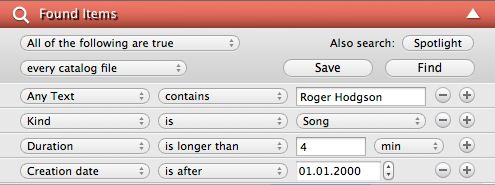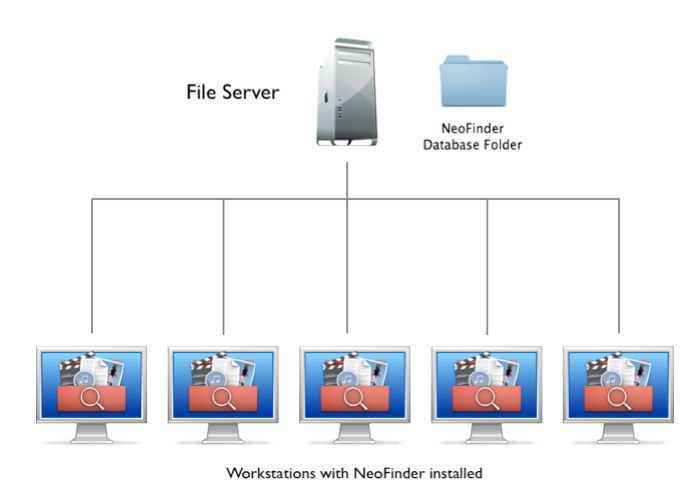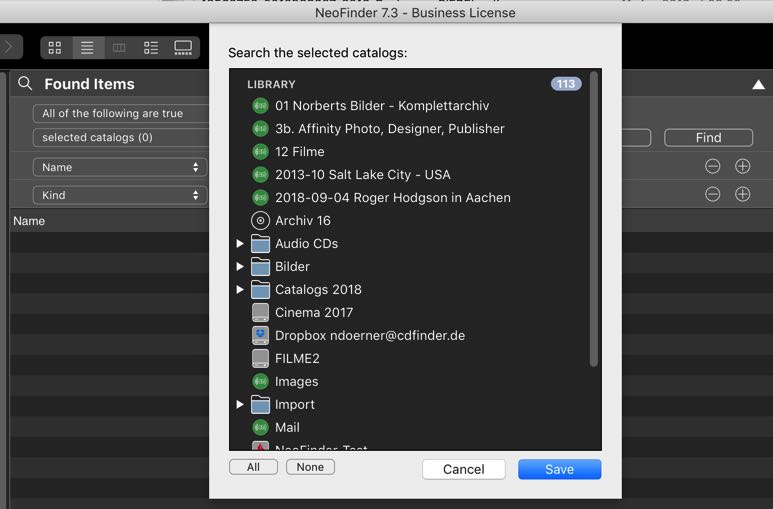
I think that would be the more ideal workflow. I could then simply copy the files to my computer, run the GPS data, and then import into Capture One. I've been evaluating HoudahGeo as a (paid) alternative, which can add GPS data to RAW files. This is inconvenient, and is largely because GeoTag can't work with RAW files.
#NEOFINDER FIND DATABASE FREE#
Now what I've been doing has been to use GeoTag (a free program) to tag photos after export from Capture One but before import to Photos. I used to tag untagged photos in Apple Photos (as those were usually all taken at home, and were easy to do). Regarding GPS tagging, one of my cameras can tag its own photos, and the other cannot. I can find images more easily in Photos and, if I need to re-process an image, I can then easily find it in Capture One as well. My folder and album hierarchy are mirrored between the two (done manually). It also allows me to share images to Photos-based shared albums. I then export the images at JPEG (more recently I've been exporting as TIFF and using Permute to convert to HEIC) and import them into Apple Photos, which retains the GPS functionality and face detection from Aperture. My current workflow is to use Capture One as a book of "digital negatives." I import all of my RAW files into Capture One, culling images and sorting them, and doing edits. Capture One is a superior photo editor but it has some lacking DAM functionality compared with Aperture, for my needs. I was force off of Aperture because I upgraded cameras and there was no support there. Hard to give that one up it had just enough high-end features to be incredibly useful as a photo editor, while also retaining a lot of useful consumer-oriented features (like the GPS module, and face detection).

Hi Delwood, I'm also a former Aperture user. Please share your stories about what is working for you! It's also great for consolidating my messy organizing habits into something that works. I am finding that NeoFinder can help with some of the missing catalog functions of Media Pro. I was a CDFinder user many years ago, which I have upgraded to NeoFinder. There are some limitations in C1 Catalogs, so I am exploring which other Cataloging options will be necessary. These are then put into a big catalog so I can find them. My idea here is to use the session to work through the images in a block, then annotate and save the good ones. (Notice that this has major implications in how I will import old catalogs from Aperture and Media Pro!) Now that I am working in RAW I am finding that my choices have changed from before. Between these three I was able to confidently choose the best images (with some backups) and know that I could always change my mind. And working with RAW I can tell quickly about clipping in Shadows and Highlights and focus. I like the Session format because it encourages throwing the bad ones away.

I often bracket with the D7100 and the PL5, so a major issue was selecting the images to keep. We can discuss the geotagging part in another post. The iPhone images were converted to jpg for expediency. All of these cameras have a RAW/JPG pair, and the clock times were close, but a little off in some cases. In addition, I rounded up the GPX tracks (from a couple of GPS sources) so I could work with geotagging these images.

That list is changing, but that is what I shot in March to April of 2019. This includes a Nikon D7100, an Olympus micro 4/3 E-PL5, a waterproof TG-4, and my iPhone7. My wild experiment was to make a folder of all the images from approximately 1.5 months, with folders for each memory card that was pulled. But after learning about Sessions, I thought it might work for me.
#NEOFINDER FIND DATABASE PRO#
I've always worked with Catalogs in Media Pro and Aperture, so I thought that is what I wanted. After doing a couple of tests with each and finding that there is functionality to be explored, I realized that the first thing was to work with this months images! That way I am starting afresh and finding something that will work going forward. I will explain my approaches for the transfer from Media Pro and Aperture if there is interest. Right now, I am still printing my greeting cards using Aperture on my outdated laptop because it still works!
#NEOFINDER FIND DATABASE HOW TO#
However, I was printing cards and display images back then using Aperture and will have to learn how to get that same output now. I have watched many Webinars and have learned that I really didn't know what I was doing at times.

I am starting to explore what works for me and I would love to hear what has worked for you. I am working to transfer works created a wide range of cameras, digital and film, and cataloged using Media Pro, Aperture, and just uncatalogued.


 0 kommentar(er)
0 kommentar(er)
